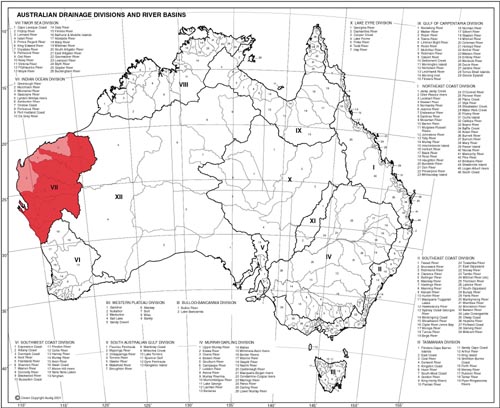Steindachner's Snake-necked Turtle -- Chelodina steindachneri
[4]
|
The carapace of living specimens is of dark brown colour. Siebenrock wrote the carapace was of olive colour mixed with yellow, which can also be seen on the pictures of the holotype, so either the species has a great colour variation or the holotype changed its natural colours due to the conservation process. The plastron is flat, yellow, with black or brown seams between the plastron scutes. The plastron of males can be concave, but it is not always the rule. (Cann, 1998) The table 1 shows the recorded measurements of Chelodina steindachneri specimens: |
||||||||||||||||||||||||||||||||||||||||||||||||||||||||||||||||||||||||||||||||||||||||||||||||||||||
Table 1
|
||||||||||||||||||||||||||||||||||||||||||||||||||||||||||||||||||||||||||||||||||||||||||||||||||||||
|
* The Siebenrock's (1914) description states the type locality being Marloo station, De Grey River in Western Australia, however Cann (1998) points out there is no such place on the De Grey River; instead there is a place called Marloo station on the Murchison River. |
||||||||||||||||||||||||||||||||||||||||||||||||||||||||||||||||||||||||||||||||||||||||||||||||||||||
|
The head is flat with a protruding nose. The pupil of the eye is black and
the iris is bright yellow around the pupil and orange outwards. Neck is relatively thin but very
long. |

Distribution
The species occurs in the rivers of the Pilbara
Drainage Division in Western Australia between the De Grey River in
the north and the Irwin River in the south (30 km north of Perth). (Cann,
1998) Other rivers inhabited by Chelodina steindachneri include
Murchison, Wooramel, Gascoyne, Ashburton and Fortescue. The drainages
of these rivers are marked in red on the distribution map. The pink
areas are most likely also inhabited by the species but there is no
evidence to it.
While the geographic distribution of Australian chelids is generally limited by the presence of permanent water or its seasonal yet predictable occurrence in natural drainage systems (Anon. 1967; Leeper 1970), Chelodina steindachneri is an exception as it also occurs in water courses that fill unpredictably and which may be dry for well over one year.
Right photo: Distribution map of Chelodina steindachneri
